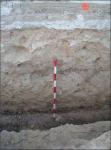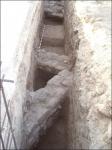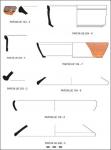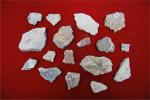Summary (English)
The ‘Park of Nations’ site, whose name derives from the nearby urbanization located in the Albufereta, corresponds to a Roman villa from the high-imperial era that survived until the late Roman period. There are still aspects which are unknown about it but its period of occupation spans from the first century BC until midway through the 6th century AD. The villa is situated in the E of the Ibero-Roman city of Tossal de Manises and can be found in the Partial Plan of Ansaldo Castle and the Partial Plan of Nations Park, delimited by Miriam Blasco Avenue and the streets Palas Ateneas, Afrodita and Hermanos Torres. The excavations, which started in 1987, have uncovered housing structures of the pars urbana. The spacious rooms were decorated with vegetable-themed murals; in addition, a thermal area with a hypocaust has been identified. The pars rustica has also been excavated, in which the most notable find is a torcularium used for the manufacture of oil, a warehouse, and an oven to make bread or glass.
Under one part of the structures, the remains of 6 cremation tombs were identified. The funerary urns contained human remains and were accompanied by their respective regalia; these included fragments of ceramic vessels, coins and decorated bones, which date from early imperial times.
Research (2009)
When fencing off the archaeological site ‘Roman Villa of the Park of Nations’, the Municipal agency for Culture commissioned an archaeological monitoring. Regarding the construction of the fence, 2 types of enclosure were considered: a permanent one and provisional one. The monitor was developed only for the permanent enclosure and has partially uncovered a series of wall structures which belong to the ‘Roman Villa in the Park of Nations’, since they have the same orientation as the walls unearthed in previous interventions on the site. These walls are situated in the most eastern part of the site and should continue under the pavement of Miriam Blasco Avenue. The dating of the walls was complicated by the inability to find their foundations. In addition, given the narrow width of the trench (< 1 m), the interpretation of the remains proved to be difficult. The stone used is of varying size and poorly carved; where it interlocks, barely any lime was found in the earth. The recovered materials date from the first and second centuries A.D.
In Sector II, closer to the area of the torcularium, no structure has been identified, most probably due to the reduced width of the trench planned in the fencing (0.40 m wide). It was in this area that the later materials were documented, dated in the Late Roman period.
(translation by Alex Redmond)
- Ruth Falcó Martí y Miguel Fernando Pérez Blasco
Director
- Ruth Falcó Martí
Team
- Miguel Fernando Pérez Blásco
Research Body
- Diputación Provincial de Alicante, Museo Arqueológico de Alicante (MARQ)
Funding Body
- Patronato Municipal de Cultura. Ayuntamiento de Alicante






![Download [PDF]](/excavation/skins/fasti/images/results/download_sml.png)


